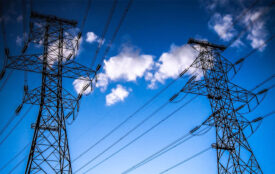Three key challenges for the off-grid sector to become a real industry
The developments in the off-grid electrification are enormous – and yet the sector has not managed (so far) to grow into a truly relevant industry.
The reasons are diverse and vary from region to region: the conditions in India and Bangladesh with strong local productions and protected domestic markets are different than the ones in the sub-Saharan states of Africa.
Nevertheless, there are structural similarities that hinder the development of an off-grid industry. Here are the three most important:
1. Structural discrimination in relation to central power generation
The energy industry in all countries is organized along the lines of the implemented energy generation and distribution. And it is usually designed as a central energy supply.
It is a mistake to assume that the off-grid technology would be implemented as soon as it would be “competitive”. Policies, strategic planning, regulations, and incentives are rather characterized by the understanding that “electrification” is understood only as a connection to a power grid with central power generation (whether renewable or conventional). As a result, statutory regulations and state programs inevitably involve questions in terms of grid connection, grid stability, central energy storage and central energy generation. Decentralized power supply has here, as always, only an outsider place: tolerated, but only as a (temporary) special solution.
The observation of a structural discrimination of the decentralized energy technology is confirmed by the current hype in the implementation of large power plants in developing countries: wind parks, solar power plants and large hydropower plants are elements of a centrally organized power supply. Decentralized production – even though it is sometimes promoted in individual programs – remains, on the other hand, always of secondary importance: in laws, regulations, strategic plans – and above all, in the minds of the responsible actors.
2. Homemade obstacles
It is often also the off-grid sector itself, which hinders this change into a serious industry. The sector still suffers from the fact that the development of viable markets is hampered under the pretext of a “social impact” – perhaps not directed but negligently. When, for example, international organizations such as USAID or UNCDF distribute millions of grants selectively to individual companies, they not only make investors insecure and distort local competition but they also make the creation of a sustainable off-grid market difficult.
In order to avoid damage to the off-grid sector, such grants for individual companies must be replaced by subsidies which are equally available to all market participants and thus serving the market development. This requires a rapid rethinking and reorientation of the objectives of the granting institutions. However, it seems currently at least doubtful that this will happen.
3. Neglecting the local off-grid economy
Finally, a future off-grid industry would need a flourishing local B2B business, which would ensure the availability of decentralized products for local entrepreneurs. In the field of mobile solar lamps, it is fortunate to see that manufacturers do not build up their own local distribution network anymore but resort to local distributors. However, the solar home systems sector is still far away, at least as far as the larger SHS are concerned.
The one-sided concentration on the sales and financing model “Pay-as-you-go” (PAYG) proves to be a structural ballast, despite all the effectiveness of this instrument, because now, manufacturers are also acting as lending bank. As long as production, end customer financing and distribution remain in one hand, solar home systems are only available to a limited extent for independent, local distributors.
The consequences can be seen everywhere in Africa and Asia: numerous small dealers offer components (modules, batteries, LED, TV, etc.), the assembly of which then creates problems for the customer. The “do-it-yourself” systems usually work inadequately and only in the short term. This, on the other hand, considerably reduces the confidence of the population in the solar technology as a whole. The perfectly matched complete systems are in turn usually not freely available, but only in the shops of international PAYG companies.
There are indubitably many reasons why this is good so. However, this monopolization is detrimental to the development of an off-grid industry. Here, it is necessary to counteract and, in addition, to develop and strengthen the local B2B market.
Source
Harald Schützeichel is editor of Sun-Connect News and Director of Stiftung Solarenergie – Solar Energy Foundation.







